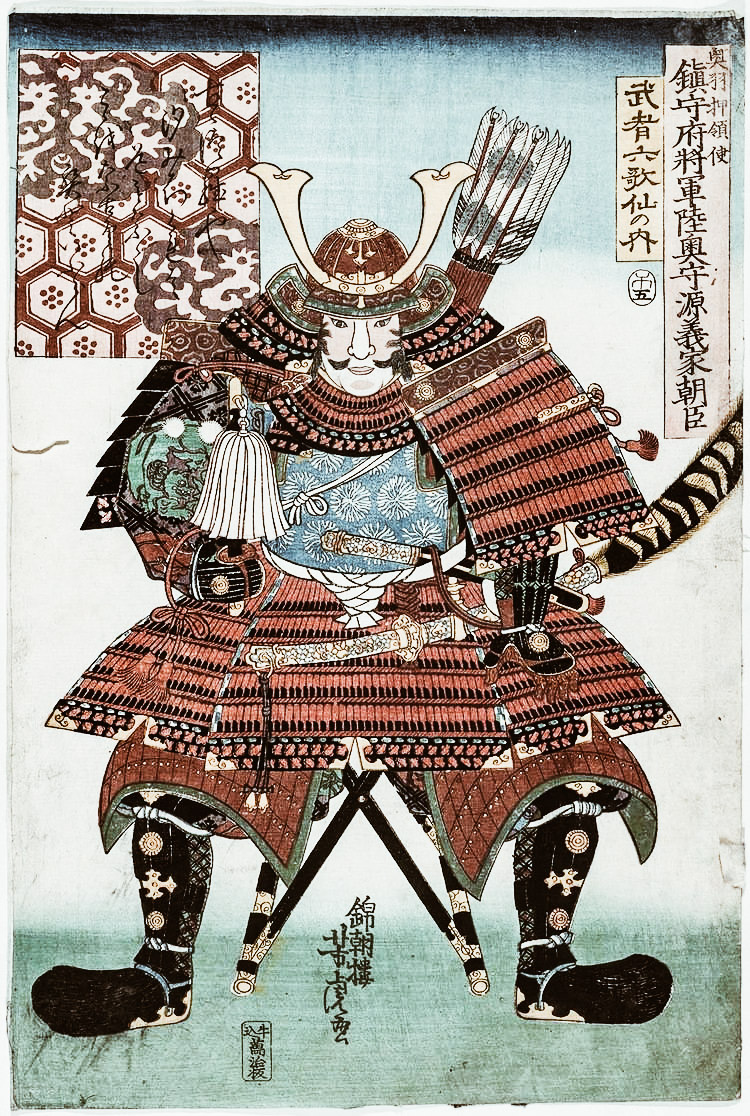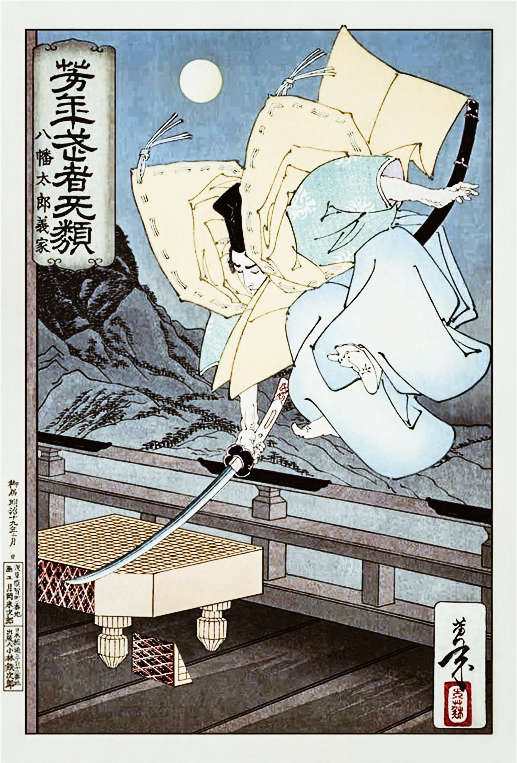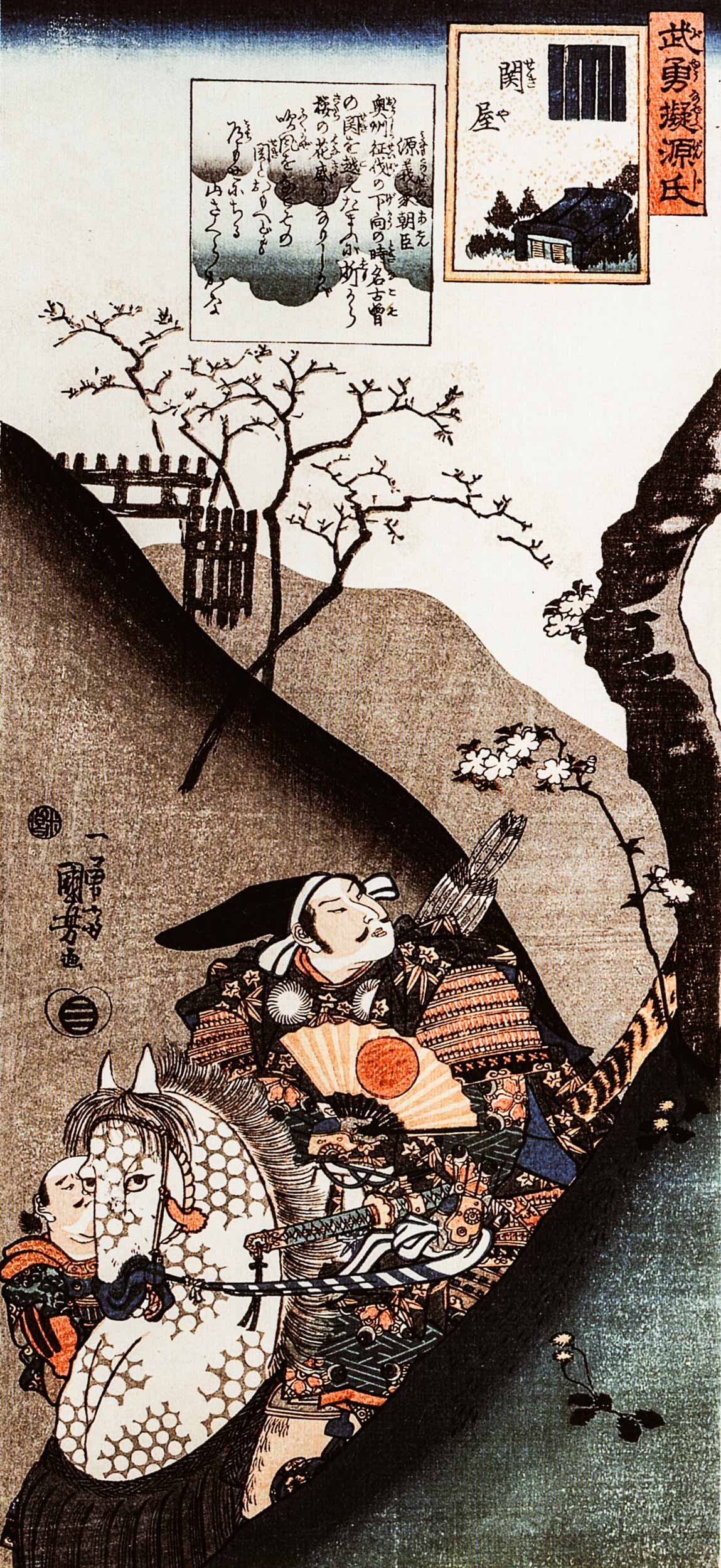Japan History: Minamoto No Yoshiie
Minamoto No Yoshiie, lo spirito del Samurai
scritto da: SaiKaiAngel
Minamoto No Yoshiie (1039 – 4 agosto 1106), incarna lo spirito del samurai. Fu il primo figlio di Minamoto Yoriyoshi, un famoso comandante.

photo credit: alchetron.com
Nel 1051 Minamoto No Yoshiie fu incaricato di sconfiggere il clan Abe nella guerra Zenkunen (guerra dei primi nove anni) e il clan Kiyohara nella guerra di Gosannen (guerra dei tre anni successivi). Abe aveva ricoperto per anni importanti incarichi in questa regione lontana e proibitiva ed era giunto ad assumere una certa autonomia. Come Taira Masakado, Abe aveva avuto il compito di sottomettere i barbari settentrionali e, dal punto di vista della Corte, diventare essi stessi barbari. Sono stati infatti descritti come ebisu, un termine generico che è stato applicato anche ad Ainu.
Dopo la sua morte, Yoshiie fu elevato allo status di Kami: ribattezzato “Hachimantaro” che significa “figlio di Hachiman”, il dio della guerra shintoista.

photo credit: wikipedia.org
La guerra Zenkunen
Nel 1050 il potere di Abe no Yoritoki, era diffuso nell’intera regione, e questo gli ha dato il permesso di riscuotere tributi e confiscare terre. ll governatore ufficiale, privato di ogni regione, chiese aiuto al governo imperiale. Minamoto no Yoriyoshi fu nominato allora nuovo governatore e inviato con il figlio contro il clan Abe.
La lotta durò dal 1051 al 1063, dodici anni di cui nove di guerra e tre di tregua. Yoshiie combatté al fianco del padre in tutti gli scontri, inclusa la battaglia di Kawasaki e l’assedio di Kuriyagawa.
Nel 1057 il figlio di Abe no Yoritoki, Abe no Sadato proseguì la guerra dopo la morte di suo padre.
Nel Mutzu Waki, omaggio alla reputazione del guerriero di Yoshiie, c’è il racconto di uno scambio avvenuto tra Yoshiie e Sadato durante la fuga di questo dalla fortezza sul fiume Kurika, durante le aggressioni dell’esercito dei Minamoto.
Hachimantarō, durante un inseguimento lungo il fiume Koromo gridò: “Signore, state state mostrando le spalle al nemico! Non vi vergognate? Giratevi un momento, ho qualcosa da dirvi.” Quando Sadato si voltò, Yoshiie disse: “Il castello di Koromo è stato distrutto”. Sadato, voltandosi, disse: “Nel corso degli anni i fili si sono aggrovigliati, e ciò mi addolora”. A quel punto, Yoshiie ripose la freccia che aveva caricato, e tornò al suo campo. Nel mezzo di una battaglia così selvaggia, quello fu un atto da gentiluomo.
Yoshiie tornò a Kyoto nei primi mesi del 1063 con la Testa di Abe no Sadato e l’anno seguente prese come servitori parecchi seguaci degli Abe che aveva fatto prigionieri.

photo credit: wikipedia.org
Guerra Gosannen
Yoshiie fu comandante durante un altro importante conflitto del periodo Heian. Agli inizi del 1083, nominato governatore della provincia di Mutsu, si intromise per calmare gli animi all’interno del clan Kiyohara, in precedenza alleato dei Minamoto nella guerra contro gli Abe.
Nonostante questo, la lotta tra Kiyohara no Masahira, Narihira e Iehira sulla leadership del clan non si fermarono, e così Yoshiie si impegnò a riportare la pace nella regione. Lo scontro finale si svolse nel 1087 sulle palizzate di Kanazawa. Yoshiie, aiutato dal fratello minore Minamoto no Yoshimitsu e da Fujiwara Kiyohira, assaltò la posizione tenuta da Kiyohara no Iehira e da suo zio Kiyohara no Takahira. Il conflitto divenne noto come la successiva guerra dei tre anni e culminò a Numu (1086) quando Takahira e Iehira furono uccisi. Nel Kokon Chomonjū si narra che durante l’assedio di Kanezawa, Yoshiie abbia evitato un’imboscata notando uno stormo di uccelli prendere il volo da una foresta. Pur subendo grandi perdite nei suoi ranghi, si dice che Yoshiie sia stato un leader particolarmente efficace, riuscendo a tenere il morale alto e preservando la disciplina tra i guerrieri.
Minamoto No Yoshiie fu definito “Il Samurai dal più grande coraggio sotto al cielo”. Mel 1098 fu concesso a Yoshiie di visitare la Corte imperiale, un raro onore che per sua stessa rarità indica il divario crescente tra la Corte e le case provinciali. Questa alienazione alla fine avrebbe contribuito all’eclissi dell’autorità imperiale da parte dei samurai alla fine del XII secolo.
Tuttavia, è difficile collocare Minamoto Yoshiie in un contesto storico. Il suo più grande contributo politico fu probabilmente il rafforzare la famiglia Minamoto, in particolare quei rami che risiedono nel Kanto. L’altro suo contributo è stato meno tangibile. La leggenda di Minamoto No Yoshiie, che emerse dalle sue guerre settentrionali e dalle cronache come un uomo di guerra colto, stabilì un modello per il futuro samurai che avrebbe influenzato le successive generazioni di guerrieri.
Condividi:
- Fai clic per condividere su Facebook (Si apre in una nuova finestra)
- Fai clic qui per condividere su Twitter (Si apre in una nuova finestra)
- Fai clic qui per condividere su Tumblr (Si apre in una nuova finestra)
- Fai clic qui per condividere su Pinterest (Si apre in una nuova finestra)
- Fai clic per condividere su Telegram (Si apre in una nuova finestra)
- Fai clic per condividere su WhatsApp (Si apre in una nuova finestra)
- Fai clic qui per condividere su Reddit (Si apre in una nuova finestra)
- Fai clic qui per stampare (Si apre in una nuova finestra)






